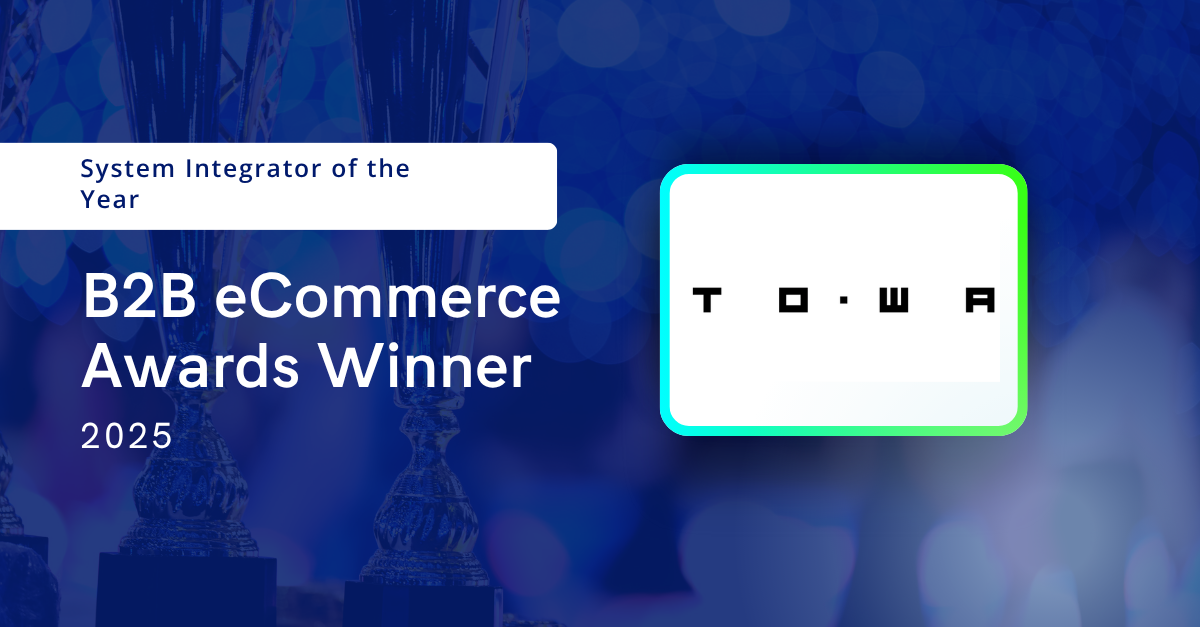B2B In The Post COVID Era
The new “COVID” world has impacted individuals, retail, hospitality and front-line medical workers to name a few. These impacts have dominated the media but little is spoken about the B2B industry, and in particular the wholesale business models supporting retail?
What is happening to these business types and what does this business model need to look like in the future?
As a high-level summary, a B2B model designed to support the retail industry is characterized by core service types1:
- Strategic product curation or product design
- Management and/or close collaboration with manufacturer
- Carrying bulk quantities
- Warehousing
- Transporting
- Management of landed costs and stabilized pricing
This summary is not intended to over-simplify this business type, but to assist in delivering context as to how COVID-19 has affected the foundations to this model.
How COVID-19 has permanently damaged supply chain:
The impacts to the B2B industry as a result of COVID-19 are many, however the fundamental issues can be summarized in three parts…
- Supply chains have been decimated
- Retail ordering stopped/cancelled
- Retailers closing down
Supply chain:
This pandemic has clearly shined the light on the vulnerability of supply chains around the world, but it’s not as simple as blaming China for shutting down for a period of time.
What has caused supply chains to be rendered instantly brittle?
The answer stems from the old school supply chain strategy which has remained in play for decades, to focus “supply chain optimization”. This is defined as the act of committing to a single mode of product supply then focus rigorously on…
- Cost minimization
- Inventory holding reduction
This has come as a direct result of the commoditization of the supply chain.
This approach was reasonable when global markets remained productive through varying environmental and market influences. COVID-19 has flipped this on its head forever and is due to the manner in which this pandemic has effortlessly invaded factories and shut down logistics channels around the world: trucking, rail, sea and air freighting2.
This has not only exposed the old school approach to B2B but it has forced a rethink in the overall approach to this model.
Retail Ordering – cancelling and seeking discounts:
Retail clients have either reduced or canceled orders already set in motion.
This activity has been dominated by fashion retailers who fear they will be burdened with seasonal garments that will not sell through in time3.
The Work Rights Consortium (WRC) estimates global brands have cancelled in excess of $20 billion (USD) worth of orders with suppliers, directly impacting poorer nations.
For those orders not cancelled, retailers are demanding discounts on pricing already been set and contractually agreed on4.
For the B2B industry, this activity has cast doubt in the long-term strength of these business relationships.
Retailers are closing:
As a result of the pandemic, a long list of well-known established retailers around the world are closing down or filing for bankruptcy.
Some recent examples:
- Debenhams
- Arcadia Group: Top Shop, Dorothy Perkins, Miss Selfridge
- G-Star
- PAS Group: Black Pepper, Yarra Trail, JETS Swimwear
In the old school ways of B2B, these business types grow when retailers grow. The inverse occurs when they shut down5,6,7,8.
Retailers who are vertical have been hurt more:
The growth of fast fashion over the last few years has stimulated the creation of “vertical” retailer models designed to increase a retailer’s control in the “value chain” and essentially cut out the B2B model.
COVID-19 has hurt retail, but the demise of the supply chain has hurt those retailers who have adopted a vertical retail business model exponentially more. It’s one thing for retailers to cancel orders from wholesalers, but it’s another cost-based issue when you own the value chain9.
The PAS Group adopted the vertical model across its brands and has recently announced its going into administration. This is not to say the vertical caused its demise, but it would be a contributor10.
This increased exposure to the “vertical retail” business model becomes relevant when looking at what the future of the B2B industry needs to look like in order to survive and thrive in the post-Coved era.
B2B in the Post COVID ERA:
This is what we know in the context of the B2B model and the COVID-19 outbreak…
- The old way of managing and drive supply chains no longer works
- There is a growing lack of confidence in retail partnership
- COVID-19 has highlighted the lack of preparedness of retailers
The future for B2B can and will shine bright. To construct the new robust competitive advantage requires an evolution of the model summarized in four strategic pillars…
- The NEW Supply Chain
- The NEW Product curation
- The NEW approach to the end consumer – going direct!
- The NEW approach to the business customer – enhancing experiences
#1. The NEW Post-COVID Supply Chain:
Where cost minimization and inventory reduction used to be the priority, this has now been surpassed with a shift to reliable supply. This from PWC on what will happen when building supply chain resiliency in a post-COVID world…
The cost of supplies may increase, stemming from overtime and expedited freight costs, as well as from paying premiums to buy up supply and hold capacity11.
This flipping of the traditional ways of approaching supply chain will translate to an introduction of a series of new costs. Leaders are already preparing, and are being seen to focus on three fundamental methods to building supply chain resiliency…
#1. Improving visibility. The injection of technology to develop transparency across all stages of logistics and manufacturing.
#2. Dynamic modelling. The process of applying new tools and technologies for risk evaluation. This is to measure and monitor the potential impacts of the following potential influencers of supply…
- Geopolitical
- Global health
- Exchange rates
- Local economic prosperities or lack thereof
#3. Development of “Plan B’s”. Actively seeking out alternative sources of product and/or material supply.
Of interest, while these new activities will increase costs across the supply chain, in time, systems and process can be put in place to control these costs.
Amazon is spending $4 billion on the creation of “near COVID free supply chain”. This is to assist in growing their direct to consumer channel and support their B2B function (marketplace).
Amazon is going to build the first vaccinated supply chain globally. That is, if you’re a vendor, if you’re a worker, if you’re a customer, anything that goes through their supply chain is not only not interrupted but is virus-free.
The ability to cement reliable supply of product becomes key to growth and contributes to bringing to life the next pillar…product curation12,13,14,15.
#2. Product curation:
The new COVID-Consumer is looking to retailers to become the “curators” of products that best meet his/her needs. The days of consumers wanting hundreds of choices are over.
Consumers don’t want choice, the want the best choice that relates to their need. This has been reflected in the research completed by Google where they found dramatic increases in keyword searches where “the best” is now commonly being used in product searches.
Consumers no longer want “headphones” they want the “the best headphones”, the “best TV”, or “the best moisturizer for face”.
This trending plays perfectly into the curation strategy B2B organsiations can own. This from a US leading retail expert….
The future of retail will not be about having a large variety of products, as it has been in the past, but rather the next generation of successful retailers will win over consumers with their thoughtful curation of products.
An important question then becomes…
Who will curate for the curators?
This is where the new B2B model comes in.
If there is resiliency in a supply chain comprising transparency, risk modelling, and Plan B’s in place, the B2B model opens up to stronger opportunities in the capability of strategic product curation that align to…
- The new COVID driven market perceptions
- The new COVID-Consumer tastes and motivations
- The new COVID-Consumer buying habits
This takes away or diminishes the “commodity-trap” B2B organisations can find themselves in.
This ability to own the curation function sets the B2B model up for the next new pillar, introducing or improving the focus on a direct to consumer channel. Going direct!16,17,18
#3. The NEW approach to the end consumer
With the new supply chain and a robust curation function in play, the opportunity to introduce a direct channel to target consumers becomes too enticing to ignore.
This represents the foundation to a successful direct to consumer approach, but there are other strategic reasons as to why this becomes a must for a B2B organization’s future.
There are five…
Retailers and wholesalers are on a level playing field:
When it comes to customer connections and understanding what customers want, retailers and B2B organisations are now a level playing field. Why? Because COVID-19 has change consumers forever. Retailer must relearn how the “COVID consumer” wishes to information gather and engage.
B2B organisations used to feel left behind and that retailers had an advantage in their knowledge of their customers and target consumer. However, as a result of COVID-19, every business that must engage with customers must now relearn how to engage.
Retailers are now in the process of trying to relearn and understand what this looks like. B2B organisations have the opportunity to learn at the same pace as retailers and arguably learn faster if the direct to consumer channel is set up correctly.
Retailers are going “Vertical”:
As mentioned earlier, retailers are moving to “vertical” business models. There is not enough data at this stage to suggest what “vertical retailers” will look like post-COVID, however, if B2B models adapt the new supply chain and curation, they have the ability to move faster.
Product curation demands knowledge of the customer:
B2B organisations who wish to strengthen their curation strategy require close connections with the market, and more importantly their target consumer.
The most effective method to achieve this is via a direct retail channel.
The caveat to this statement is to ensure this “retail connection” has feedback loops wrapped around it so the B2B organisation can effectively listen to customers to understand his/her thoughts of the product, its design, and how its meeting needs.
Creating direct to consumer channels has never been simpler:
Thanks to the advancement in technologies (eCommerce technology, email marketing technology, live chat etc…) it has never been easier for B2B organisations to develop robust direct to consumer channels that can scale.
However, it’s important to understand the importance of approaching this new channel iteratively. There are best practice methods to ease into this channel, reducing a B2B organization’s risk, and effectively set this direct to consumer connection in motion19.
The new “B2I” – “business to individual”:
B2B leaders around the world are no longer talking “B2B” and/or “B2C”, they are evolving into what they are calling the “B2I” model: “business to individual”.
This is the philosophy of approaching the target consumer and the business customer as “individuals”.
The focus is to create relevant and meaningful one-to-one experiences that can scale for both the end consumer and the B2B customer.
Global research studied 7,000 consumers and business buyers and asked them if they preferred to be treated as an individual instead of a random “ID” the results found…
- 84% of consumers wanted to be treated as an individual
- 83% of business buyers preferred to be treated as an individual
This need to treat buyers as an individual leads to the final pillar which is catering to what is being referred to as the “consumerized buyer”20,21.
#4. The NEW approach to the business customer
The last pillar is the preservation of B2B relationships but approached in a way where there is a higher standard of connectivity, treating buyers as individuals.
The biggest gap in this need to build great connectivity for individuals for B2B organisations comes in the form of the online channel. While B2B organisations work hard in the physical world to accommodate the evolutionary needs of customers, the majority fall short when it comes to offering a digital channel that meets this new expectation.
Put simply, the digital connectively in B2B for B2B customers is seen to be a weakness for many.
Some statistics to show the size of the opportunity in getting the digital channel right for the B2B customer…
-
- B2B sales in 2017 reached $7.7 trillion, double B2C
- 89% of organisations are reported to be using the online channel for B2B buying or information gathering (2019 research)
- 69% of B2B organisations are stopping the printing of catalogues (2019 research)
- The mobile device drives/influences over 40% of revenue in leading B2B organisations
22,23,24
The “Consumerized Buyer”:
The “consumerized buyer” has come as a result of the influence of B2C practices. These professional buyers are people first! In their own personal lives, they experience Amazon, Apple, and those retailers who are seen to be doing a great job and as a result now want the same intuitive experiences in their workplace.
It is these experiences that are now setting the new tone for what the “consumerized buyer” expects, from B2B organisations.
80% of companies implementing B2B eCommerce believe their customer expectations have changed due to the influence of B2C practices.25
Specific research was done to uncover the expectations of the “consumerized buyer” which can be seen in the summary table below.
Of high interest in the research is the comment, “I have switched vendors for a more consumer-like experience” – 67% responded yes to this behaviour. This is significant26.
Where many B2B organisations feel they have a “lock” on a professional relationship, this data proves the “consumerized buyer” is prone to leave if experiences are poor.
More recently, COVID-19 has had a heavy hand in adjusting these “consumerized” expectations and behaviours. For B2B organisations to enhance their digital connectivity to the “consumerized buyer” they must first improve their internal “listening disciplines” and let their own customer’s voice lead the way for change27.
“Consumerized experience design” – the way forward:
This act of listening forms the foundation to delivering the insights needed to construct a new “B2B customer experience design plan” that will dictate how the B2B organisation behaves in the following ways…
- What eCommerce technology is required and how it needs to behave*
- What customer support needs to look like and how this connects to the digital channel**
- What ongoing relevant communications need to look like
- What information is required to move from one business system to another
- What the content roadmap needs to look like for the online channel to educate/inform buyers and assist them in their decision making***
*78% of buyers would buy more if the online channel was intuitive and easy to use
**98% of buyers believe the quality and variety of support options is an extremely important factor in their choice of a B2B organisation
***40% of buyers would engage with a B2B organisation if they were perceived as being the expert in their field28
The process of constructing an experience design plan is the same for business customers as it is for the end consumer.
Obviously, the B2B customer’s motivations and reasons to engage are different, however, the process of needs identification is the same, with the only difference being the outcomes29.
Conclusion:
Reinventing the wheel is not required when looking at the evolution of the B2B model. The priority now is for B2B organisations to adequately respond while in crisis brought on by the pandemic.
It is the hopes this research has provided clarity to help define and set a new strategic direction for B2B organisations. However, this is not enough, the executive teams within the B2B organisations need to collectively agree change and investment is needed.
- 50% of B2B senior executives admit they lack funding to execute digital transformation programs
- 57% say they have a culture resistant to change and have little enthusiasm for the adoption of digital/eCommerce technologies
30
As a result of COVID-19, the tolerance levels for poor online experiences has dropped significantly because the pandemic has forced a greater dependency on digital channels for everyone.
If B2B organisations can pivot and adapt in a timely manner, the opportunity to cement its future and drive growth is very real.
Resource references
1https://www.economicsdiscussion.net/distribution-channel/functions-of-wholesalers/31889
2https://www2.deloitte.com/global/en/pages/risk/articles/covid-19-managing-supply-chain-risk-and-disruption.html#
3https://www.businesswire.com/news/home/20200513005647/en/COVID-19s-Impact-Clothing-Industry—Retailers-Cancelling
4https://www.theguardian.com/global-development/2020/apr/15/arcadia-group-cancels-over-100m-of-orders-as-garment-industry-faces-ruin
5https://www.theguardian.com/business/2020/apr/18/arcadia-group-may-permanently-shut-down-stores-amid-covid-19-crisis
6https://www.afr.com/companies/retail/fashion-retailer-pas-group-into-administration-20200529-p54xl2
7https://www.abc.net.au/news/2020-05-15/coronavirus-pressures-see-g-star-raw-enter-administration/12254580
8https://www.moneysavingexpert.com/news/2020/04/debenhams-falls-into-administration-/
9https://fashionthoughtsweb.wordpress.com/2016/11/27/vertical-retailers-as-a-business-model/
10https://thepasgroup.com.au/review/
11https://www.digitalpulse.pwc.com.au/supply-chain-coronavirus-covid-19/
12https://www.mckinsey.com/industries/retail/our-insights/a-perspective-for-the-luxury-goods-industry-during-and-after-coronavirus
13https://www2.deloitte.com/global/en/pages/risk/articles/covid-19-managing-supply-chain-risk-and-disruption.html#
14https://www.digitalpulse.pwc.com.au/supply-chain-coronavirus-covid-19/
15https://nymag.com/intelligencer/2020/05/amazons-coronavirus-investments-will-shred-its-competitors.html
16https://www.mytotalretail.com/article/the-new-world-of-retail-a-curated-future/
17https://hbr.org/2018/03/the-b2b-elements-of-value
18https://www.thinkwithgoogle.com/consumer-insights/best-searches/
19https://www.commaconsulting.com.au/articles/managing-business-crisis-in-unprecedented-times
20https://www.strategy-business.com/article/Forget-B2C-and-B2B-We-Need-B2I?gko=6f318
21https://www.salesforce.com/blog/2018/06/digital-customers-research.html
22https://www.statista.com/statistics/540658/projected-b2b-e-commerce-volume-usa/
23https://amasty.com/blog/global-e-commerce-trends-and-statistics-2017-2018/
24https://www.commaconsulting.com.au/articles/50-of-b2b-search-queries-are-occurring-on-smartphones
25https://amasty.com/blog/global-e-commerce-trends-and-statistics-2017-2018/
26https://www.salesforce.com/blog/2018/06/digital-customers-research.html
27https://www.commaconsulting.com.au/articles/managing-business-crisis-in-unprecedented-times
28https://www.pushon.co.uk/app/uploads/2018/08/Attracting-and-retaining-B2B-customers-in-a-world-of-choice.pdf
29https://www.commaconsulting.com.au/articles/b2b-businesses-need-to-create-amazing-online-experiences
30https://www.commaconsulting.com.au/articles/b2b-businesses-need-to-create-amazing-online-experiences












